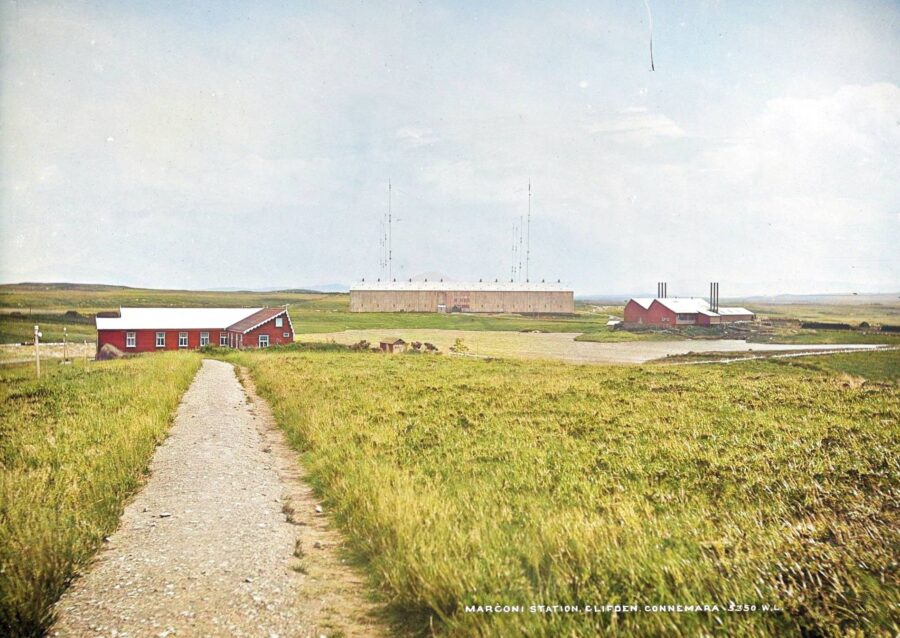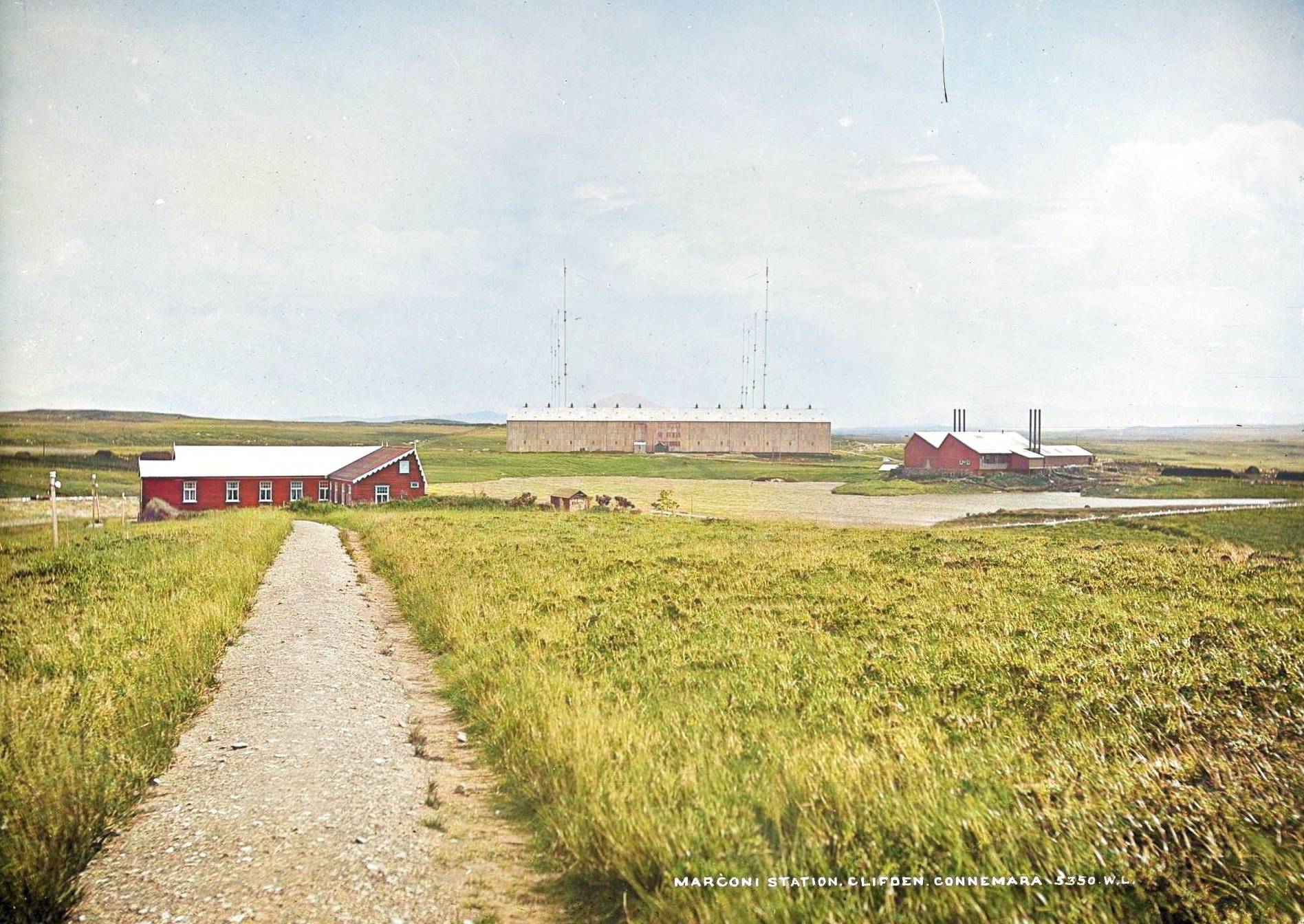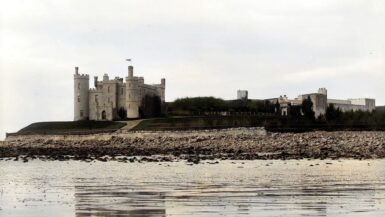Marconi Station, located in Clifden, County Galway, Ireland, is a historical landmark that played a crucial role in the development of wireless communication. This article delves into the fascinating history of Marconi Station, exploring its establishment, technological advancements, and impact on the world of communication. If you’re interested in learning about Marconi Station, Clifden, this comprehensive and easy-to-understand guide is for you.
The Birth of Marconi Station, Clifden
In the early 20th century, Italian inventor and electrical engineer Guglielmo Marconi was on a mission to revolutionize global communication. Known as the “father of radio,” Marconi’s groundbreaking work in wireless telegraphy paved the way for the creation of Marconi Station in Clifden, County Galway, Ireland.
The station was established in 1907 and built on the western coast of Ireland on the Derrigimlagh Bog, a vast expanse of peatland. The strategic location of Clifden was chosen due to its proximity to the Atlantic Ocean, enabling a clear and direct line of communication to North America.

Clifden’s Role in Transatlantic Communication
Marconi Station in Clifden played a vital role in transatlantic communication during its operational years. With the establishment of the station, Marconi aimed to create a reliable means of wireless communication between Europe and North America. At the time, this was a groundbreaking concept that would change the way the world communicated.
The Clifden station worked in tandem with a sister station in Glace Bay, Nova Scotia, Canada. These two stations facilitated the transmission of wireless telegraph messages across the Atlantic Ocean, connecting the Old World with the New World. This long-range communication system was a significant advancement, as it replaced the existing system of undersea telegraph cables, which were slower and more susceptible to damage.
The Technological Wonders of Marconi Station
Marconi Station in Clifden was a marvel of engineering and innovation in its time. The station boasted several cutting-edge features that facilitated efficient and effective communication across the Atlantic.
- Antennae System: The station’s antennae system was a feat of engineering. Spanning over 12 kilometers in length, the aerials were supported by wooden masts, some of which stood up to 61 meters tall. This extensive antennae system allowed for the transmission of strong wireless signals across the Atlantic Ocean.
- Power Generation: Marconi Station was self-sufficient in terms of power generation. The site housed a power plant that used locally sourced peat to fuel its generators. These generators produced enough electricity to power the entire operation, including the massive transmitters and receivers required for long-range communication.
- Morse Code Transmission: During its years of operation, Marconi Station facilitated the transmission of telegraph messages using Morse code. This code, consisting of a series of dots and dashes, was used to send and receive messages between Clifden and its sister station in Glace Bay, Nova Scotia.
The Impact of Marconi Station on Global Communication
The establishment of Marconi Station in Clifden represented a turning point in global communication. The station’s ability to transmit messages wirelessly across the Atlantic Ocean revolutionized the way people communicated during the early 20th century.
Some notable accomplishments of the station include:
- Speeding up communication between Europe and North America: Prior to the establishment of Marconi Station, communication between Europe and North America relied on undersea telegraph cables. With the introduction of wireless communication through Marconi Station, messages could be transmitted faster, facilitating smoother and more efficient exchanges between the continents.
- Enhancing safety at sea: Marconi Station played a crucial role in maritime communication, assisting in the transmission of distress signals and other vital messages between ships and shore. This improved safety for vessels navigating the treacherous waters of the Atlantic Ocean.
- Impacting world events: The station’s ability to rapidly transmit messages across the Atlantic Ocean made it an essential tool in reporting on world events. Marconi Station played a pivotal role during World War I, as it was used to relay crucial information between Europe and North America.
The Decline and Closure of Marconi Station
Despite its monumental achievements, Marconi Station in Clifden faced challenges that ultimately led to its decline and closure. The primary factor that contributed to the station’s decline was the rapid advancement of communication technology.
In the years following World War I, new and more efficient methods of communication emerged. These innovations, such as shortwave radio and transatlantic telephone cables, rendered Marconi’s long-range wireless telegraphy increasingly obsolete.
Moreover, the economic downturn of the 1920s placed financial strain on Marconi’s operations. The station suffered from reduced revenue and struggled to maintain its expansive and resource-intensive infrastructure.
In 1925, Marconi Station in Clifden was officially closed. However, its closure did not mark the end of its story.
The Legacy of Marconi Station and Its Preservation
Though Marconi Station ceased operations in 1925, its legacy in the world of communication remains. The station’s groundbreaking work in wireless telegraphy laid the foundation for modern communication systems, such as radio, television, and even the internet.
Today, the site of Marconi Station in Clifden is preserved as a historical and cultural landmark. Visitors can explore the remnants of this once-thriving communication hub and learn about its impact on global communication through informative self guided exhibits.
In 2014, the Derrigimlagh Discovery Point was developed as part of the Wild Atlantic Way, Ireland’s first long-distance touring route. This site, which encompasses the location of Marconi Station, offers an immersive experience for visitors, combining interactive displays with the natural beauty of the surrounding landscape.
Visiting Marconi Station Today
For those interested in experiencing the history of Marconi Station firsthand, a visit to Clifden, County Galway, is a must. The Derrigimlagh Discovery Point offers a unique opportunity to explore the remnants of Marconi Station while also enjoying the breathtaking scenery of Ireland’s west coast.
Visitors can walk along the 5-kilometer looped trail, which leads through the Derrigimlagh Bog and past the ruins of Marconi Station. Along the way, informative panels detail the history and accomplishments of the station, providing insight into its profound impact on global communication.
In addition to learning about Marconi Station’s history, visitors can also explore the natural beauty of the Derrigimlagh Bog. The bog is home to an array of flora and fauna and offers a serene setting for nature enthusiasts.
In conclusion, Marconi Station in Clifden, County Galway, Ireland, stands as a testament to the power of innovation and the indelible mark it leaves on history. From its establishment in 1907 to its closure in 1925, Marconi Station played a crucial role in revolutionizing global communication. Today, the site serves as a window into the past, offering visitors the chance to explore this remarkable piece of history while enjoying the stunning Irish landscape.






Leave a reply